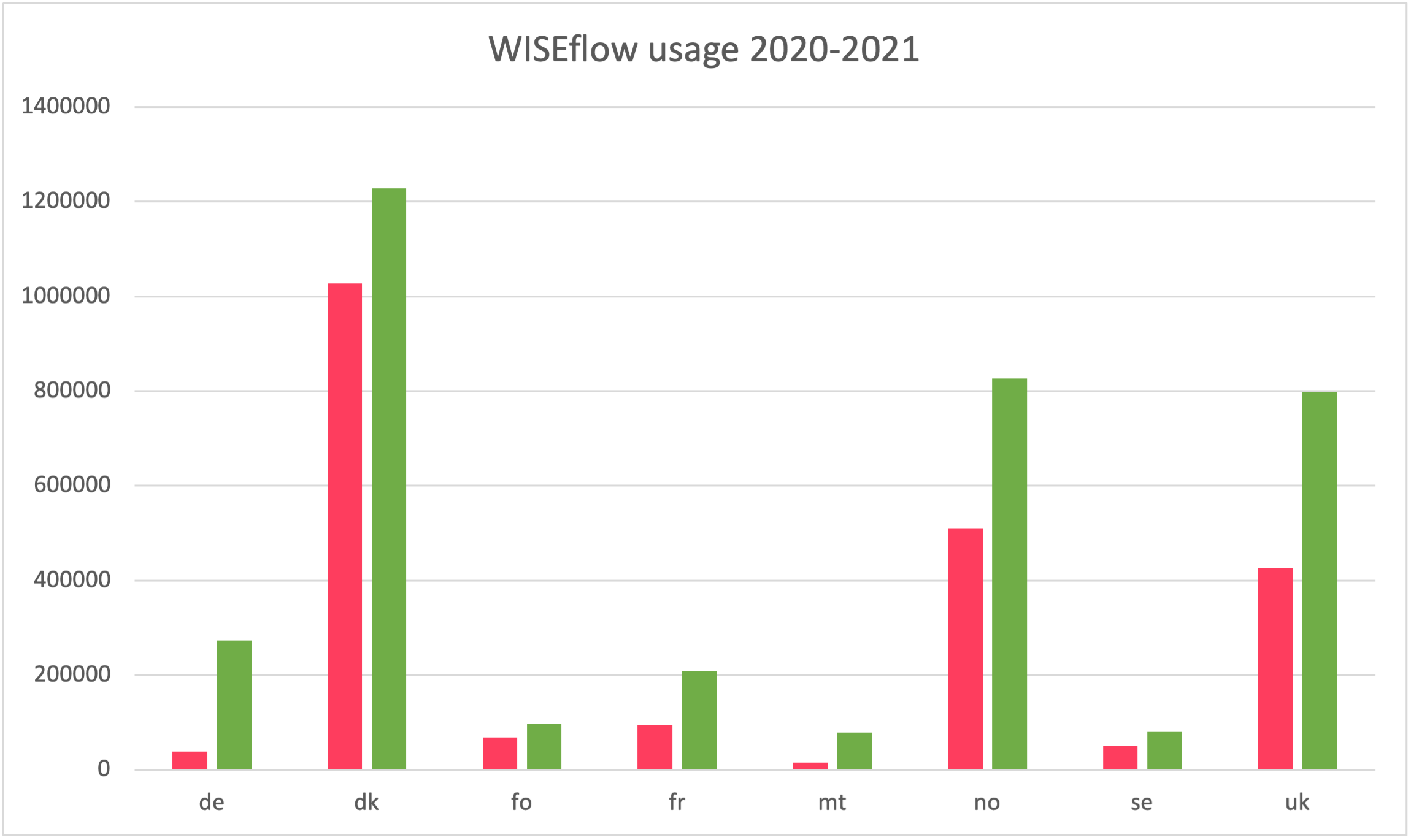WISEflow in review: Observations and Reflections from 2021
In 2021, more exams were conducted on WISEflow than ever before, with a record 3.6 million flows taking place. This is an increase of 54% compared to 2020 and attests to the ongoing and growing importance of digital assessment in the European higher education sector. From high levels of WISEflow growth across Germany to the continued rise of remote digital examinations, we reflect on a challenging year.
The number of institutions working with WISEflow increased throughout Europe in 2021, as we recorded our highest ever levels of usage.
WISEflow in Germany
In 2021, more than 273,000 flows took place in WISEflow across German higher education institutions, which is seven times more than the previous year. The digitisation of German society, industry and education has been an ongoing discussion, particularly in the last election, with the pandemic highlighting areas for development, such as digital public services. The sharp rise in the use of WISEflow by German institutions is evidence of the digitisation movement gaining momentum in the country’s higher education sector. We welcome this renewed focus on digitisation and, in 2021, opened an office in Hamburg to better enable us to support our growing roster of German partners.
A Return to Normality?
Another trend we have seen emerge during 2021 is a return to some semblance of normality, especially when looking at the use of specific flow types. In order to illustrate this point, we turn our attention to our Norwegian and Danish partners and their use of FLOWlock assessments. From 2018 to 2019, FLOWlock assessments, which are for closed-book essay-based questions in which candidates only have access to the examination environment, were consistently in use in these two countries, with institutions in Norway in particular holding over 96,000 lockdown examinations in 2019.
However, when the Covid-19 pandemic hit in 2020, stark differences in flow type usage emerged as many institutions adapted to provide alternative forms of assessments amid national lockdowns. In Norway and Denmark, this meant a move away from lockdown assessments. Norwegian institutions were looking for a more formative approach, moving away from summative examinations for pedagogical purposes, whilst our Danish partners shifted for more practical reasons, due to familiarity with take-home assessments. FLOWlock usage in Denmark consequently halved, and in Norway numbers dropped down by over 86%.
WISEflow usage in 2021, however, paints a different picture. With 25,000 lockdown assessments taking place in Denmark, usage is not only back on track, but increasing. In Norway, four times as many FLOWlock assessments took place, again hinting at a return to normal practices – a trend that was further reflected across Europe. After a tumultuous few years, it is encouraging to see that, for many institutions, the pandemic has not had a lasting effect on preferred assessment styles – presenting a promising view of the year to come.
Robust and Scalable
With a 54% increase in the number of flows taking place in 2021 there were, naturally, instances of particularly high daily usage within WISEflow. FLOWmulti examinations in particular, which are open and closed-book exams that are useful for interactive online tests, often included large numbers of entrants: Concours ACCÈS ran MCQ exams with up to 8,402 participants. FLOWassign assessments, which are open book and involve PDF submissions, also saw high levels of participation, with University College London recording 4,788 users on a single flow simultaneously, alongside the University of Bedfordshire – which saw 4,638.
As WISEflow usage continues to grow across Europe, we remain committed to providing institutions and students with a platform that can handle all the demands placed upon it by thousands of users at any one time. Through WISEflow’s scalability and robustness, we can ensure digital assessments remain secure, authentic and efficient – as proven by our 2021 uptime figure of 99.9%.
Continued Remote Assessment Growth
Finally, analysis of WISEflow usage in 2021 also indicated that the use of our in-built invigilation tools continues to grow. In 2020, 367,000 exams took place that made use of WISEflow’s facial recognition capabilities. In 2021, this number rose to 657,000, an increase of almost 100%. It’s possible that this reflects not only a rise in remote examinations in light of the Covid-19 pandemic, but also WISEflow’s rising coverage of entrance examinations, which are normally closed-book-style assessments.
Looking Ahead
The picture which usage of WISEflow paints in 2021 is an optimistic one, not just in relation to pandemic response but also in terms of the growing recognition that digital assessment is not only important, but becoming a necessity, across Europe. We look forward to another year of working with our partners to provide secure and accessible digital assessments through WISEflow.


